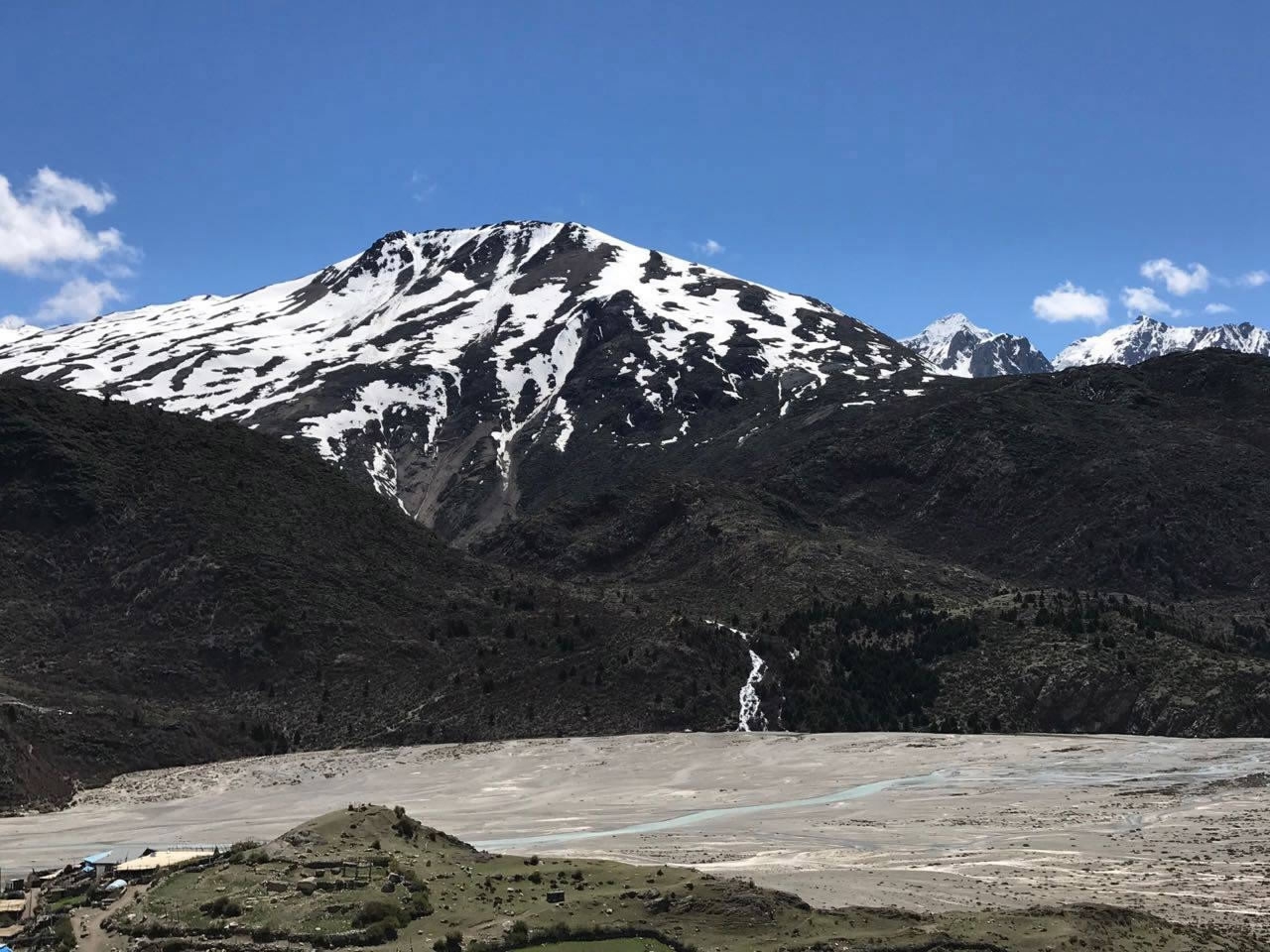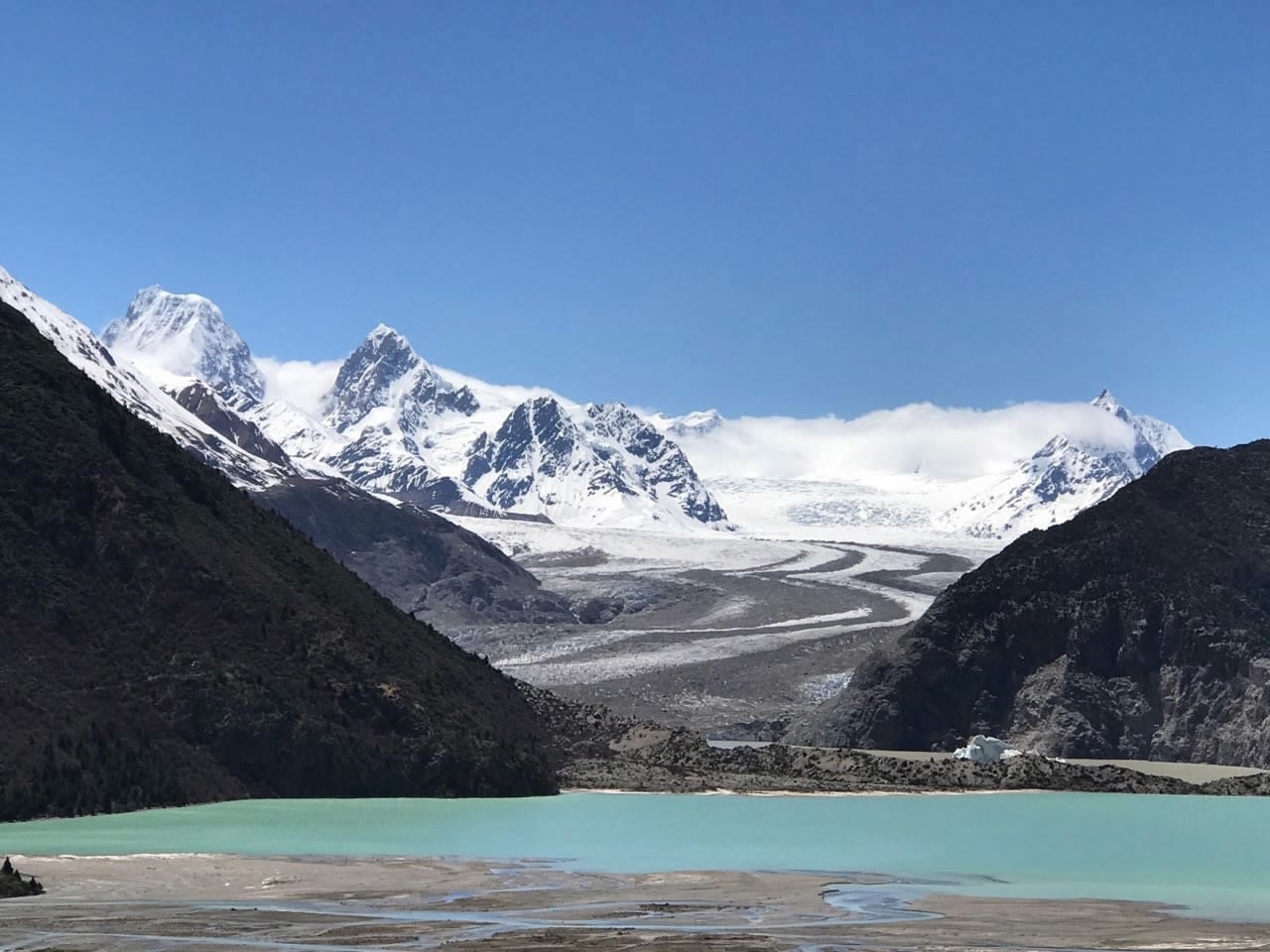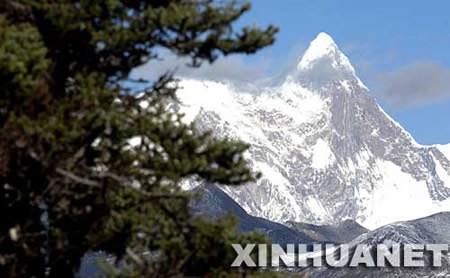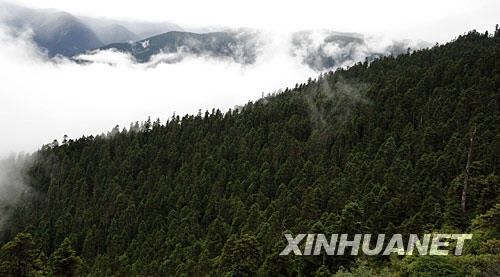By CGTN's Jiang Shaoyi
It seems like nothing can stop Tibet's worship of nature.
Four hundred kilometers south of Chamdo City lies a divine beauty relatively unknown to the outside world. From its name, we can easily see that Tibetans have a special affinity for it. They call it Laigu, or Shangri-La.
The Laigu Glacier is the largest of its kind in Tibet, and also one of the largest in the world.
However, despite its enormous bulk and splendor, this stunning creation of nature is now in danger of melting away. Over the past 30 years, Rawu Lake – the waters beneath the glacier – has become five times larger, a result of global warming.

Laigu Glacier in Chamdo City, Tibet Autonomous Region. /CGTN Photo
Fang Zhongru, the town chief of Rawa town said that they have banned motor vehicles from entering the region to reduce greenhouse gas emissions.
He said they have asked tourists to only observe the glacier from afar to ensure little human contact. Large development projects, such as the construction of big hotels or resorts, are not approved in the region.

Ranwu Lake and Laigu Glacier in Qamdo City, Tibet Autonomous Region. /CGTN Photo
The nearby Laigu village has become a real tourist attraction in recent years.
Fang said that last year, the locals took in more than 600,000 yuan (nearly 88,000 US dollars) from visitors. Not that big a number on the face of it, but it's significantly higher than previous years, when agriculture and herding were the pillars of the local economy.
But they're also not getting carried away by this growth. In a bid to preserve the idyllic setting, they're limiting the numbers of daily tourists to just 500.

The file photo shows Mount Namjiagbarwa in Nyingchi Prefecture, southeastern Tibet. The Lulang Scenic Spot in Nyingchi Prefecture, southeastern Tibet, opened to tourists on September 17, 2009. /Xinhua Photo
Then, in what seems another world, but really only on the other side of the Nyingchi prefecture, the locals live in the midst of oceans and oceans of lush green forest. With some of the world’s oldest and tallest trees, Lulang is known as the Switzerland of Tibet. Intense development of the region’s tourism attractions started five years ago, and has already generated handsome profits from travelers across the nation."
With 2.5 billion yuan (nearly 368 million US dollars) worth of investment in 2012, a plan to build a scenic town in the gigantic woodland was conceived. Business streets, art centers, exhibition halls and high-end hotels were included, as it looked to become a real draw for international tourists. After four years of construction and development, the town was officially opened to the public last year.
Even the local villagers are overcome with excitement. By letting out guest houses, some of them earned more than 300,000 yuan (nearly 44,000 US dollars) last year, a huge leap in their income. But what's even more beautiful is that even in the midst of this development, the forest has actually expanded by about five percent in recent years.

The file photo shows the Lulang Forest Zone in Nyingchi Prefecture, southeastern Tibet. /Xinhua photo
Huang Xihua is the director of the Lulang Scenic Area Management Committee. She said that they have made the greatest efforts and investment in protecting the environment, including building a sewage treatment plant and a waste transfer station. "All the trees we planted here are local species, in a bid to maintain the ecological stability."
Some people believe that environmental protection and economic development are fundamental foes. But the Tibetan people are proving, with their age-long respect for nature, that the two can be complementary.









